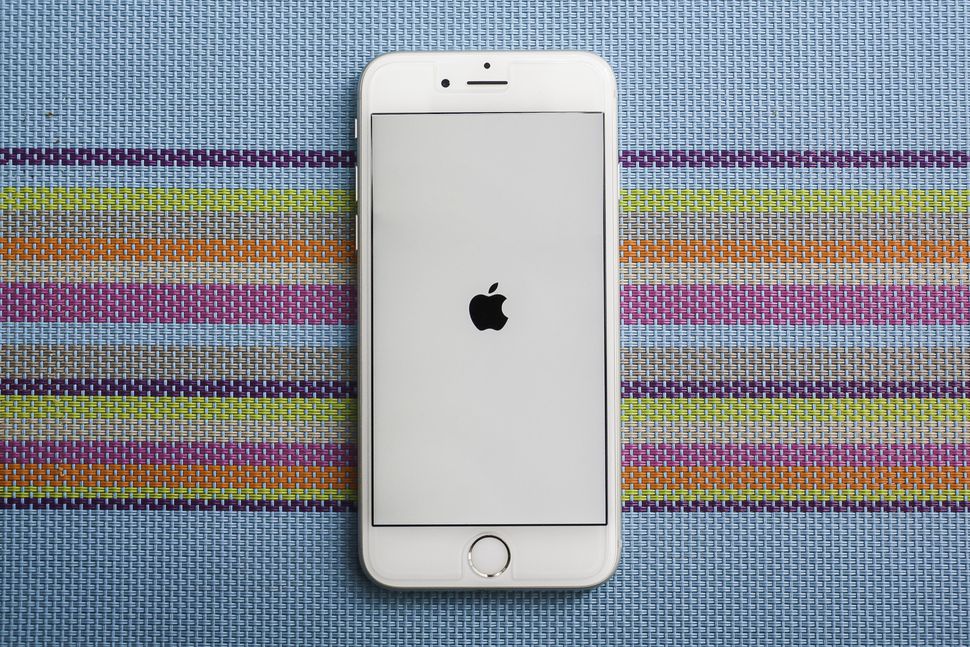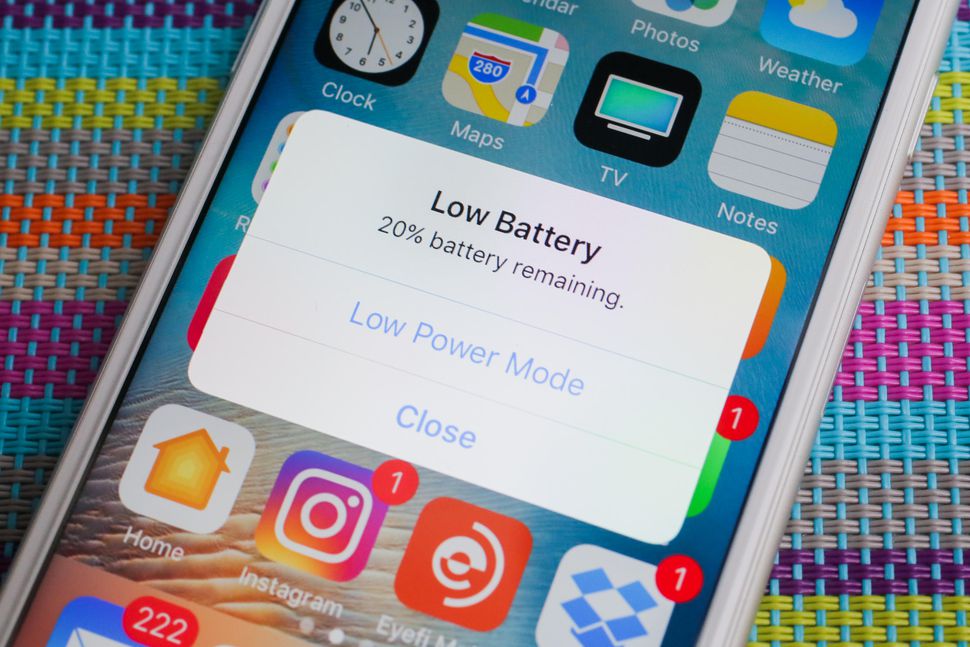Earlier this year, my mom needed a new phone. Her iPhone 6 started running slowly, and the battery drained quickly.
Instead of purchasing a new phone — she couldn’t decide which to get — she had a new battery installed to buy herself some time. I thought she was crazy to not just get a new iPhone. Turns out, she was on to something.
On Dec. 20, Apple admitted its iOS software slows down the performance of older iPhones. The company says iOS does this to counteract problems found in aging lithium-ion batteries. When a battery gets older, it doesn’t hold a charge as well and can unexpectedly shut down if it’s put under too much stress. Apple’s software prevents that from happening by slowing performance.
What you get is a trade-off. Your phone isn’t as snappy as it used to be, but it also doesn’t turn itself off when the battery says it’s far from drained.
Apple’s admission caused some outrage online and raised a lot of questions. People have long believed the company hinders older devices to get customers to buy new models (something Apple has denied), and the criticism got fierce over Apple’s lack of transparency around its battery policies.
On Dec. 28, Apple apologized formally and said it would offer a low-cost battery replacement, $29 instead of the usual $79. Two days later, Apple said customers could purchase the newly discounted battery immediately, rather than having to wait until January.
Keep reading to find out how all this started and what it means for iPhone owners.
Why did this news come out?
On Dec. 18, Primate Labs, the company behind the Geekbench processor benchmarking software, released a report that examined a common complaint from users: iPhones seem to run more slowly when a new model hits the market.
Watch this: Yep, Apple slows down older iPhones
1:24
John Poole, founder of Primate Labs, said in a blog post that processors in iPhones slow down and decrease in performance as batteries age and lose capacity. Poole explained that users expect their phones to perform the same regardless of how old the battery is, but his tests indicated that wasn’t the case.
What did Apple initially say about this?
Apple said in a statement Dec. 20, after the Primate Labs report caught widespread attention:
“Our goal is to deliver the best experience for customers, which includes overall performance and prolonging the life of their devices. Lithium-ion batteries become less capable of supplying peak current demands when in cold conditions, have a low battery charge or as they age over time, which can result in the device unexpectedly shutting down to protect its electronic components.
“Last year we released a feature for iPhone 6, iPhone 6S and iPhone SE to smooth out the instantaneous peaks only when needed to prevent the device from unexpectedly shutting down during these conditions. We’ve now extended that feature to iPhone 7 with iOS 11.2, and plan to add support for other products in the future.”
What is Apple’s latest statement?
On Dec. 28, Apple published a letter on its website that apologized to consumers and sought to explain its actions. It said, in part: “We know that some of you feel Apple has let you down. We apologize.” It said that it has never done anything to shorten the life of Apple products. “Our goal has always been to create products that our customers love, and making iPhones last as long as possible is an important part of that.”
It added: “At Apple, our customers’ trust means everything to us. We will never stop working to earn and maintain it. We are able to do the work we love only because of your faith and support — and we will never forget that or take it for granted.”
Along with the apology letter, Apple also published a new informative site with details about how its battery and slowdown software works.
Why does Apple use lithium-ion batteries?
Lithium-ion batteries are far from perfect. (Just look at Samsung and its Note 7 issues from 2016.) They’re volatile, they deteriorate relatively quickly, and they haven’t changed that much over the years. A few years ago, an advanced battery startup in California, Envia Systems, did some research and found that it took more than a decade, from 1995 to 2007, to double the energy stored in a battery — and since then the rise in stored energy hasn’t even managed to hit 30 percent.
Still, lithium-ion batteries are better than the current tech alternatives. They weigh less, last longer and charge more efficiently than older battery types, according to Apple’s battery information guide. The lithium-ion batteries used in Apple’s devices are designed to hold at least 80 percent of their original capacity for 500 complete charge cycles.
For more about batteries, check out this article from CNET Magazine.
What happens to iPhone batteries when they get older?
As batteries age, they don’t hold their charges as well as newer batteries, and they can have worse problems when the charge is low or the temperature is cold. Your battery won’t charge above 80 percent after about 500 cycles, which means it won’t last as long each time you charge it.
If your battery is old or really cold, it could unexpectedly shut down, as happened to the iPhone 6 and 6S last year. The processors in those devices wanted to hit faster speeds (something Apple calls “peak current demands”) but their batteries couldn’t handle the surge from the requests, prompting some phones to simply switch themselves off.
Is this the first time Apple has tweaked its software to boost battery life?
Nope. Apple has long focused on power management to make sure you get as much life as possible from your devices.
The company introduced “Low Power Mode” with 2015’s iOS 9 to make your iPhone battery last longer. When your battery level hits 20 percent and then 10 percent, you get a notification that lets you turn on Low Power Mode with a quick tap. It reduces the screen’s brightness, minimizes system animations and limits what runs in the background on the phone. When your device reaches a higher charge level, Low Power Mode automatically turns itself off.
Apple also has long included power-saving features in its Macs. For instance, Mac OS X Mavericks, released in late 2013, looked for moments when computer users had several programs open that they weren’t accessing. The Mac then strategically reduced the processing put toward running programs in the background.
For more on how to save battery life with iOS 11, check out this report.
How does Apple’s slowing feature work?
Apple’s iOS software, starting with last year’s iOS 10.2.1, incorporated better power management capabilities to deal with aging batteries, the company says. The operating system slows down your device to prevent it from shutting down, according to the company, but only in cases of cold temperature, a low battery charge or very old batteries.
To help manage power consumption, your processor won’t complete an intensive task immediately, but will instead spread the effort out over more attempts. What you experience is a phone that seems to lag a bit; apps run more slowly and the device doesn’t respond as quickly to your requests.
When does the feature start working?
The feature is used only in iPhones with aged batteries or low battery charges. It also slows down your phone in cases of cold temperatures. The iPhone operates best in ambient temperatures between 32 degrees to 92 degrees Fahrenheit.
18
iPhone X vs. Pixel 2 photos: Are two cameras better than one?
What slows down on the phone?
Apple said on a new support site Dec. 28 that you may see the following:
- Longer app launch times
- Lower frame rates while scrolling
- Backlight dimming (which can be overridden in Control Center)
- Lower speaker volume by up to -3dB
- Gradual frame rate reductions in some apps
- During the most extreme cases, the camera flash will be disabled as visible in the camera UI
- Apps refreshing in background may require reloading upon launch
What is not impacted by the software:
- Cellular call quality and networking throughput performance
- Captured photo and video quality
- GPS performance
- Location accuracy
- Sensors like gyroscope, accelerometer, barometer
- Apple Pay
What phones does the software apply to?
Apple’s software from last year, iOS 10.2.1, applied to the iPhone 6 and 6 Plus, the 6S and 6S Plus and the SE. This year’s iOS 11.2 extended the feature to the iPhone 7 and 7 Plus. It will be applied to other Apple devices in the future.
Does this also affect iPads and Macs?
Because iPads and Macs have bigger batteries, the feature isn’t aimed at those devices.
How about swapping out my iPhone battery?
Apple has long faced criticism about how difficult it is to replace iPhone batteries. Many older Android phones had removable backs that allowed users to swap out their batteries (though using new materials like metals has caused some companies, like Samsung, to stop offering that sort of phone design).
If you have an iPhone, you might have noticed there’s no removable back. That was a design Apple chose so it could cram more batteries into a smaller space. That gives you more battery life but also makes it harder to change your battery.
An iFixit guide to replacing the iPhone 6 battery has 25 steps. The screws to take the device apart are tiny, and making a mistake can cause you to brick the phone.
How much does it cost to get a new battery?
Apple typically charges $79 to replace the battery of an iPhone that’s no longer covered by a warranty. Companies sell do-it-yourself kits online, and you can go to an authorized Apple reseller or repair company.
On Dec. 28, Apple issued an apology for the issues it stirred up — and offered a $29 battery replacement that, it promised, will immediately return an iPhone 6 or later phone to its original performance. The new batteries will be available in January and through 2018.
Here’s a great primer on your options for replacing your iPhone battery.
What happens if you put a new battery in your old phone?
If you opt to replace your iPhone battery, the feature that slows down the phone will automatically turn off. It will be almost like you have a new phone — at least when it comes to the battery and the performance-limiting software. It starts slowing your phone only when the battery gets old or really cold.
What if I buy a new iPhone 6S? Will it be slower right away?
No, the feature kicks in only when your battery gets old or if the phone is exposed to extreme cold.
Why does my phone seem to slow down when I upgrade to new software?
Whenever Apple introduces new iOS versions, users of older iPhones inevitably complain that their devices aren’t as snappy. That’s not because of planned obsolescence — the notion that Apple purposely hobbles old devices to get people to upgrade. Instead, it could be because your storage is too full or because your Wi-Fi router is slowing down the device, among other possible explanations.
Is Apple doing this to get me to buy a new phone?
Apple says no, its software feature is meant to do the opposite: help you prolong the life of your device. Still, the company didn’t exactly advertise that all you may need to do to have a faster phone is change the battery. And that’s causing an outcry.
Apple on Dec. 28 reiterated that it doesn’t do anything to force you to upgrade: “First and foremost, we have never — and would never — do anything to intentionally shorten the life of any Apple product, or degrade the user experience to drive customer upgrades. Our goal has always been to create products that our customers love, and making iPhones last as long as possible is an important part of that.”
Are consumers suing Apple for the slowdown?
Yes, the situation is drawing legal fire. Multiple lawsuits against Apple allege the software tweak that slows some older iPhones is a fraud designed to spur upgradesto the latest model.
What happens down the road?
Along with offering cheaper battery replacements, Apple said on Dec. 28 that it will issue an iOS software update early in 2018 with features “that give users more visibility into the health of their iPhone’s battery, so they can see for themselves if its condition is affecting performance.”
So it looks like Apple aims to be more transparent about iPhone performance issues.
First published Dec. 21 at 3:35 p.m. PT
Updated Dec. 22 at 9:30 a.m. and 2:35 p.m. PT: Added information about pending lawsuits against Apple.
Updated Dec. 28 at 3:06 p.m. and 4:15 p.m. PT: Added information about Apple’s apology, its $29 battery replacement offer and its plan to issue an iOS update providing visibility about battery health.
Updated Dec. 30 at 3:50 p.m. PT: Added information about battery purchases.
Credit: cnet.com







About The Author: Austen B
More posts by Austen B